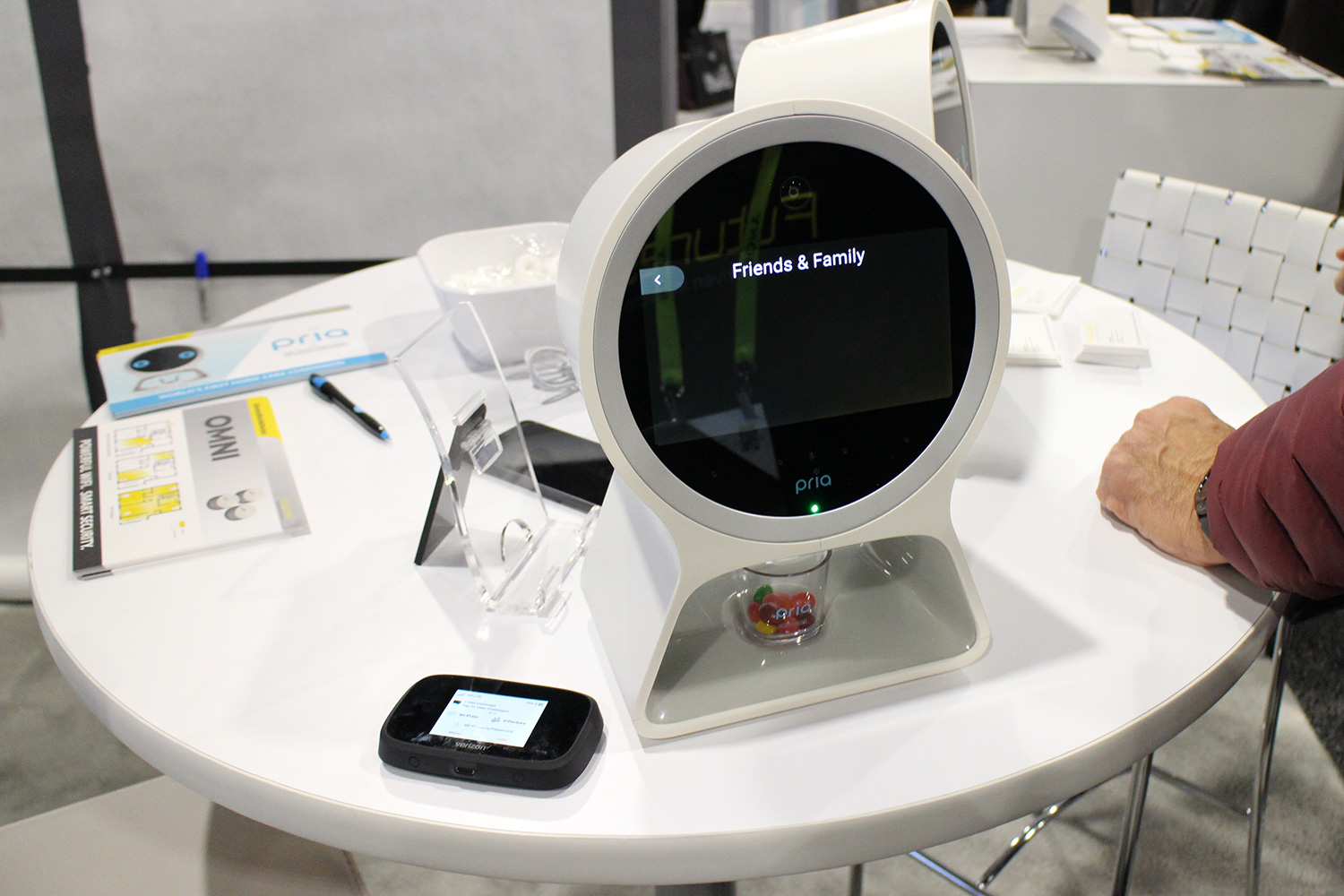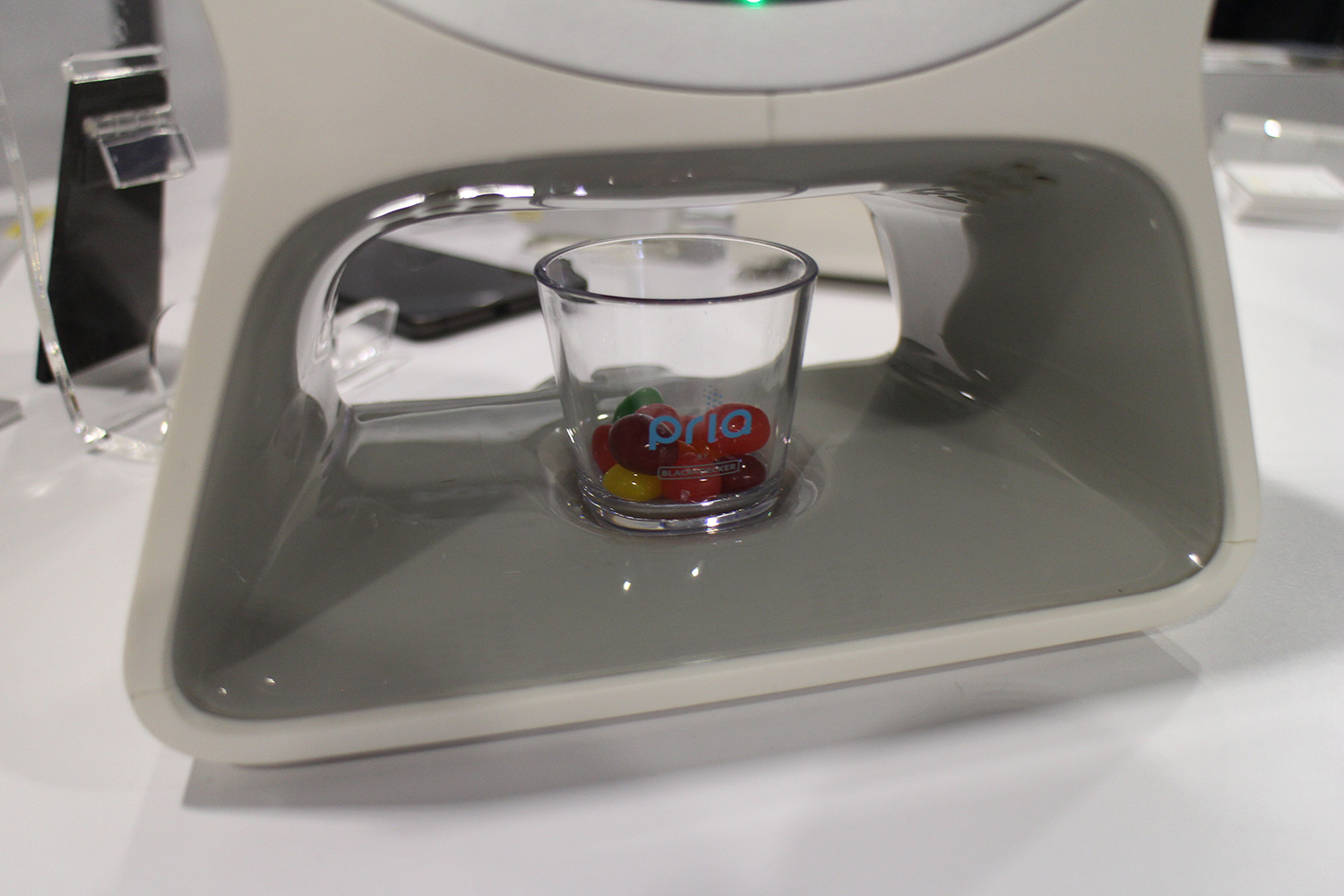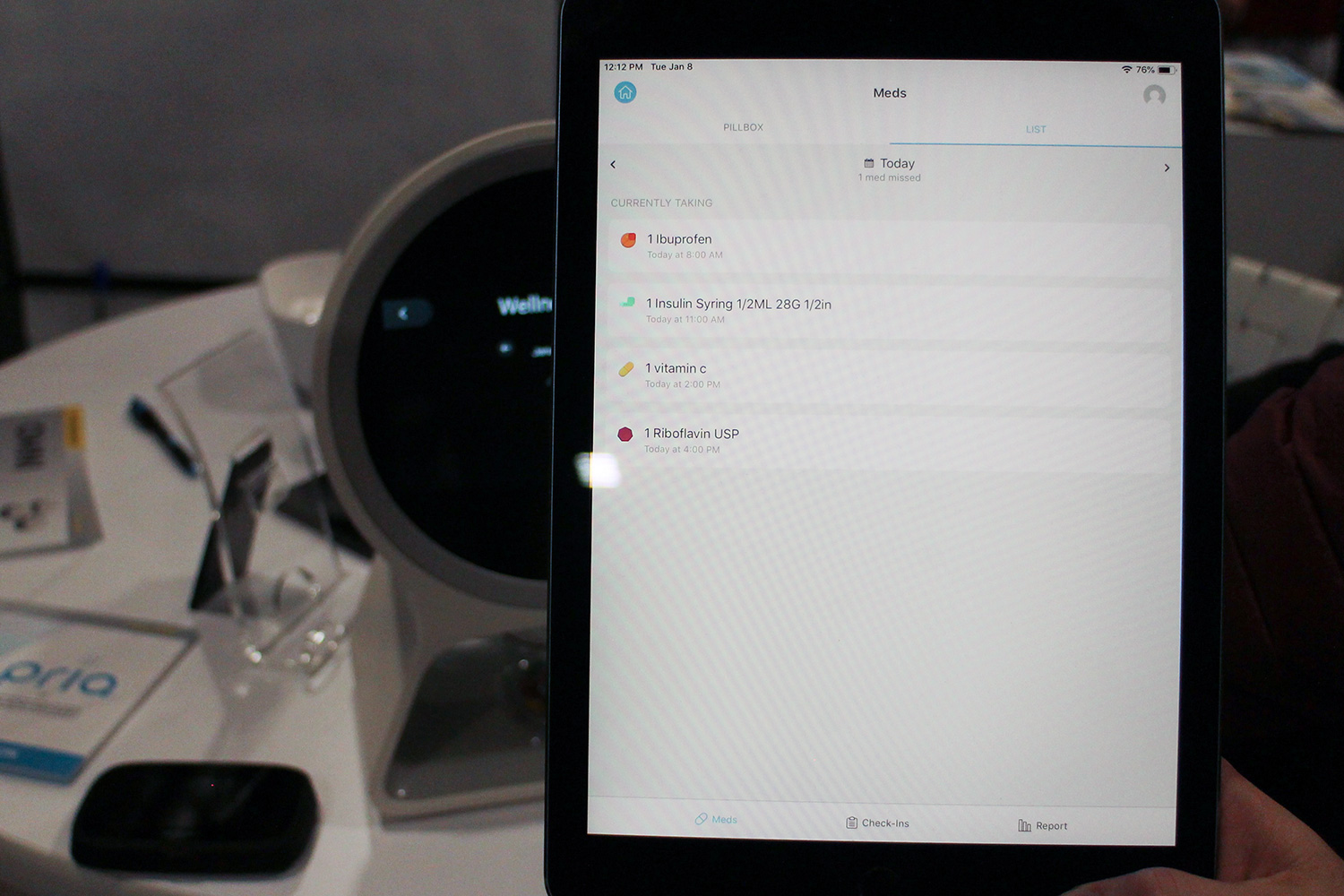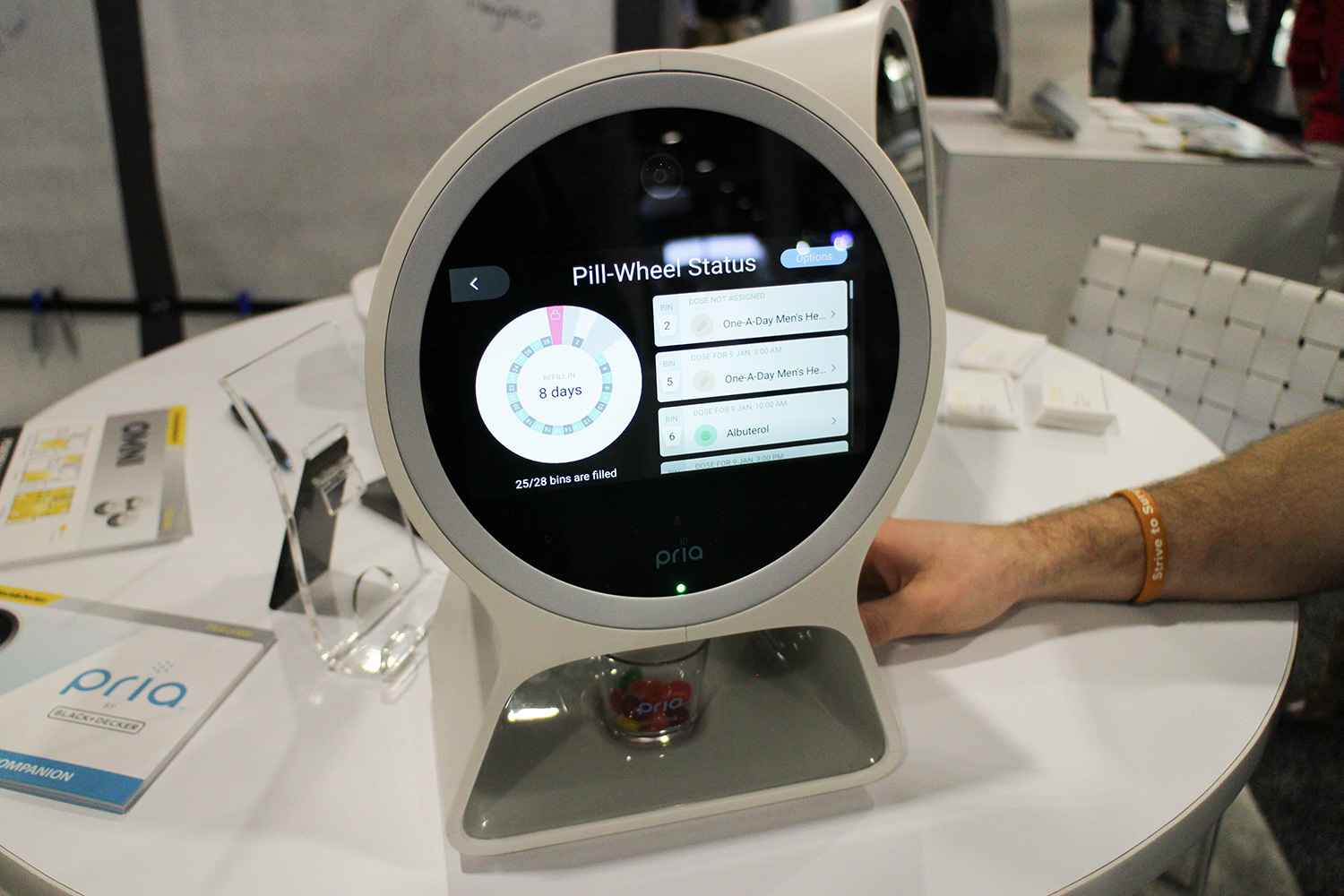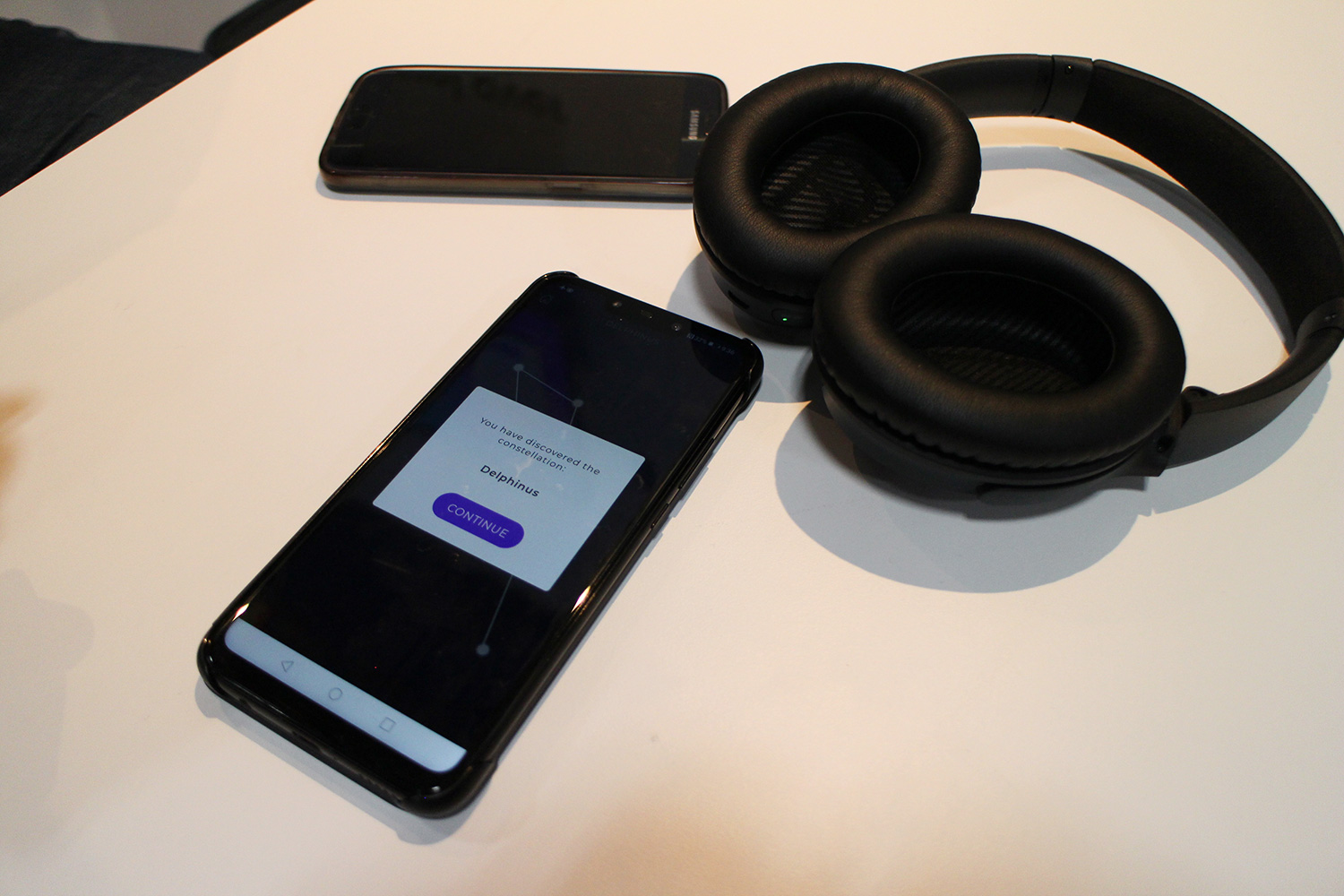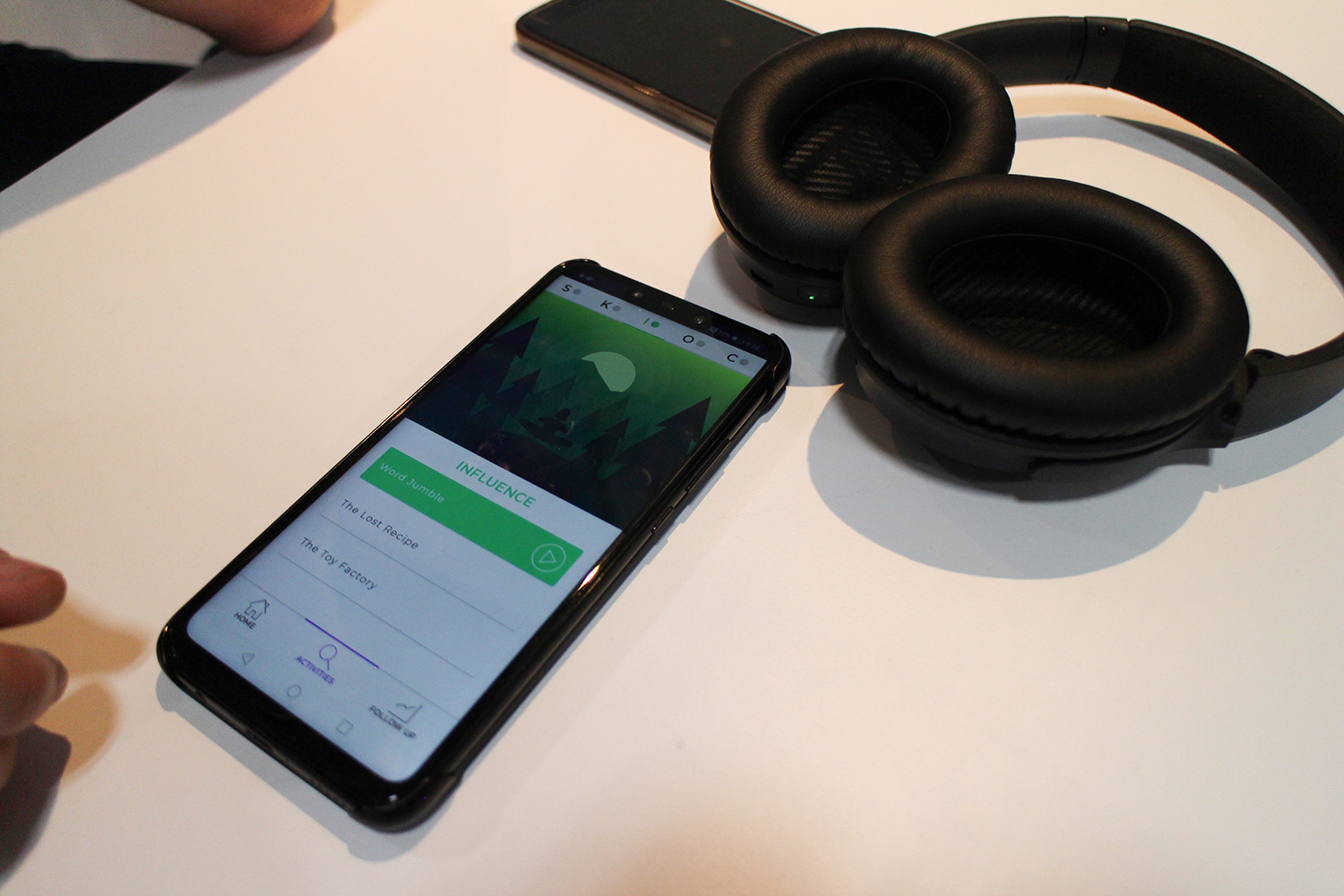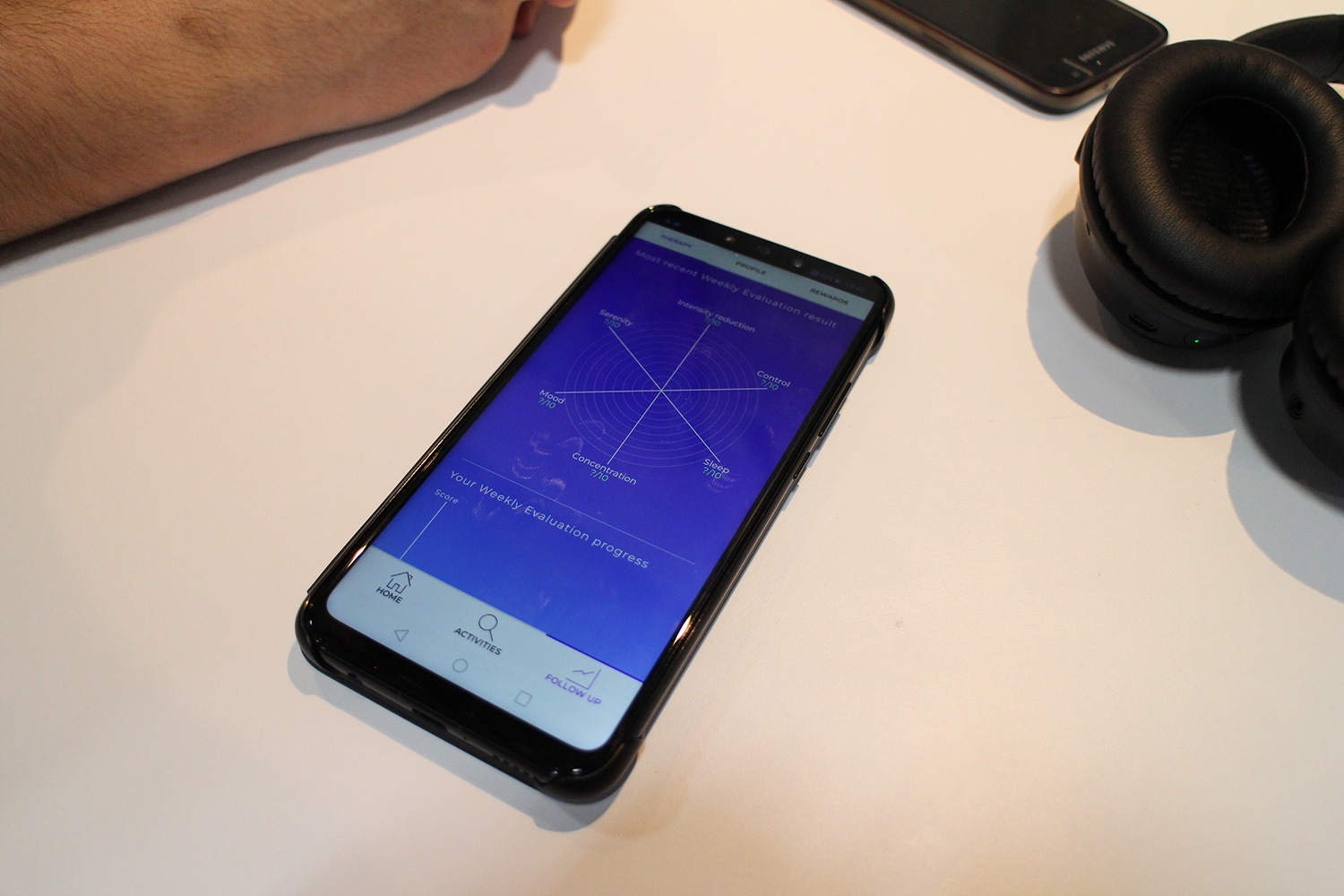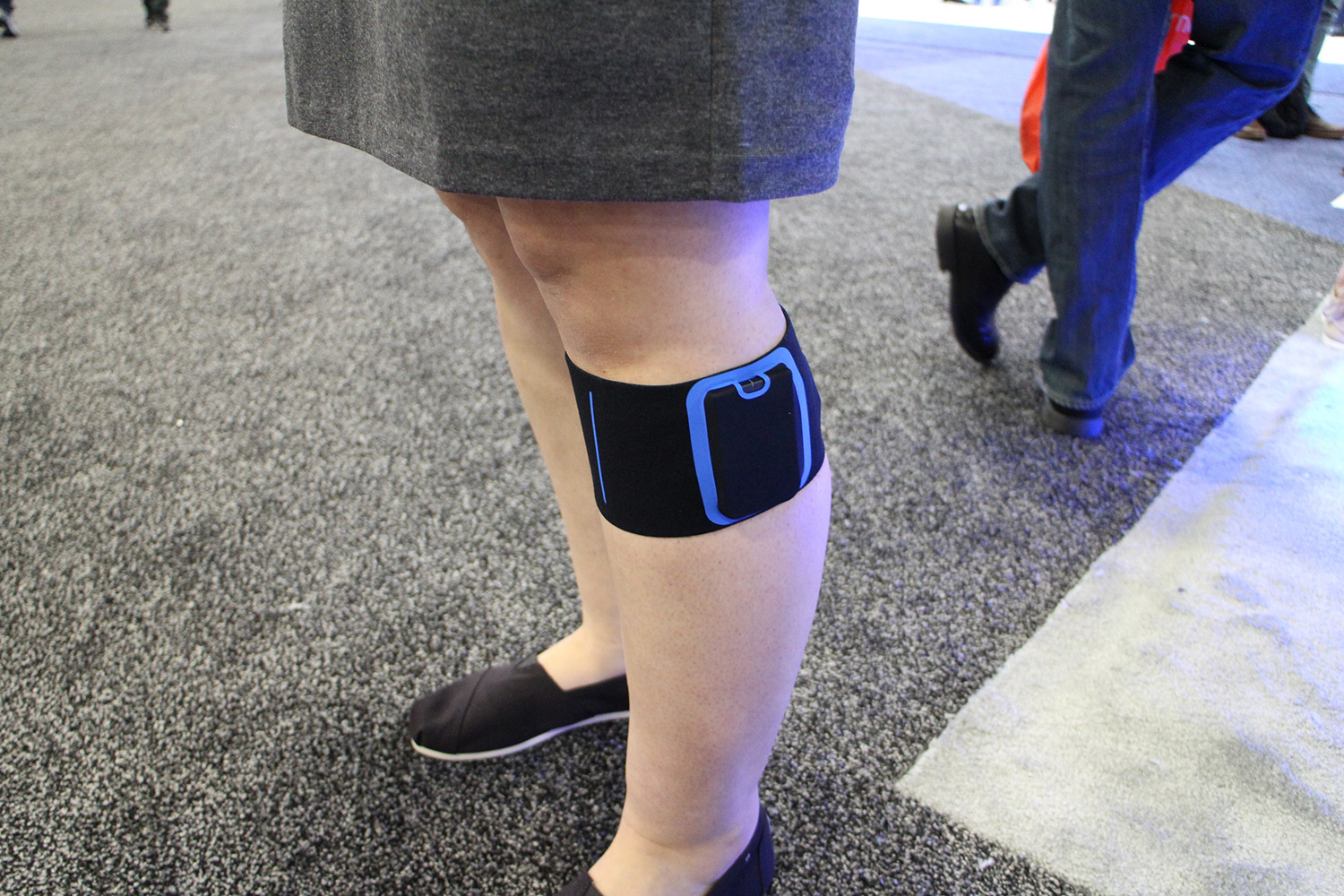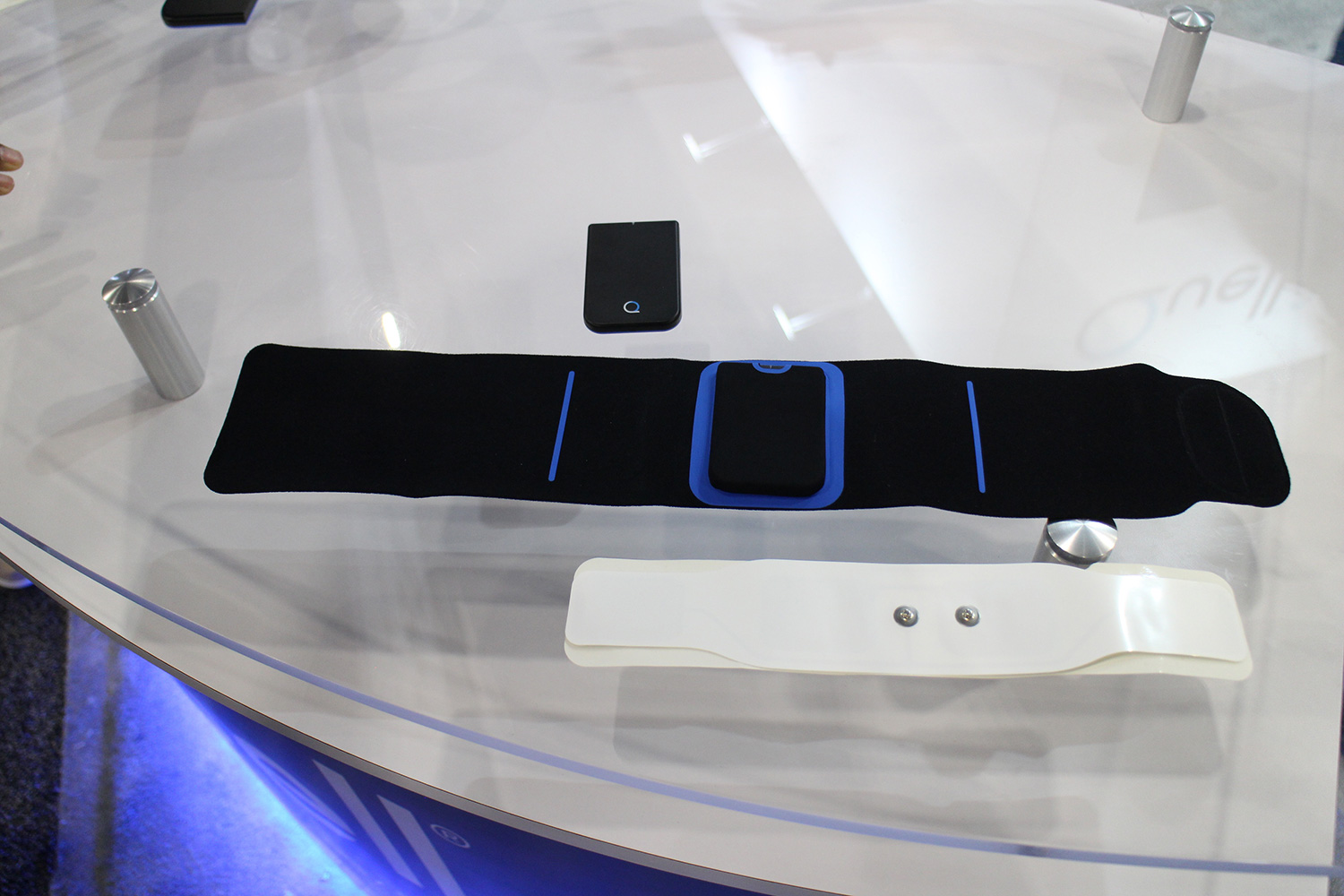Technology is supposed to make our lives easier, but the health and wellness sector is a bit of minefield. It’s not always easy to find the gadgets and services that are based on sound science, that can actually alleviate suffering and improve lives because there’s a hefty chunk of snake oil out there. We scoured CES 2019 in search of the best health gadgets and, where possible, put them to the test. Here’s what we found.
Touchpoint Basic ($160) for stress

The negative impact stress can have on our daily lives is well understood nowadays. Stress can be crippling, causing all kinds of physical symptoms, and often making people ill — it’s estimated that 1 million people call in sick every day because of stress. The Touchpoint Basic is two watch-sized wearables that emit haptic vibrations at three different intensities. Developed by neuropsychologist Amy Serin, the idea is that bi-lateral stimulation can reduce the physical effects of stress in just 30 seconds, slowing your heartbeat and getting rid of the butterflies in your stomach.
More CES 2019 coverage
- Your smartphone already does it: Redundant tech of CES 2019
- The weirdest wearables at CES give a new meaning to ‘think outside the box’
- For 2019 pricing, the Cosmo Communicator lets you type like it’s 1997
- Here Mobility opens up the ridesharing market with SoMo at CES 2019
We tried it out for ourselves and found that it did make us feel less stressed. You simply press the buttons on top of each unit to start them off, holding them close together so they sync and vibrate sequentially. If you still feel stressed, press again for a higher level of vibration. There are three levels and then another press turns them off. Touchpoint quickly reduces the physical feelings of stress and helps you to focus better. The big problem is that the vibrations are quite loud, it sounds like an incoming call when your phone is set to vibrate which makes it tough to use unobtrusively.
There’s a lot of solid research to back up the claims on this one and it worked for us, so if you struggle with stress, it might be worth considering.
Testcard ($4) urine test

The humble urine test may not sound like a candidate for tech innovation, but Testcard has come up with an astoundingly easy, affordable, and reliable package. You can buy tests for pregnancy, UTI (urinary tract infection), and glucose levels at just $4 a pop and they’ll be mailed out to you. What you receive is a thin card with three tests inside to be used in conjunction with your iPhone (an Android app is in the works). You dip the cards in urine, or pee directly on them, and then scan them with the app on your phone which gives you quick results.
The beauty of this system is that anyone can do it in the comfort of their own home. No need for a potentially costly doctor’s visit. Unlike some of the similar tests you get in clinics or surgeries, the Testcard app can also determine if the test is out of date or invalid in some way, so the results are very reliable.
Testcard will be available in the U.K. from April and the U.S. in July. The company is also working on developing PSA tests (to screen for prostate cancer) and STI test (for sexually transmitted infections like gonorrhea).
Omron HeartGuide ($500) blood pressure monitoring

It’s not very easy to measure your blood pressure, but if you rely on a snapshot measurement at the clinic once a month you may not be getting the full picture about your health. That’s why Omron has developed a smartwatch capable of taking accurate blood pressure readings and sending the data to an app on your phone. There’s an expanding band inside the watch, just like a standard blood pressure cuff and you can use it to take manual readings, or even schedule it to take readings automatically, including at night while you sleep.
Anyone with high blood pressure and concerns about the risk of stroke will be interested in a device like this. Having a more complete picture of your blood pressure over time can be enormously helpful for your doctor. The HeartGuide watch also serves as a fitness tracker that counts steps and tracks your sleep. It can highlight incoming alerts from your phone, too.
It is Food and Drug Administration-cleared and it takes around 30 to 40 seconds to produce a reading. We saw it in action and it appears to work as advertised.
Stanley Black & Decker Pria ($500) home care companion
You may associate the name with power tools and home improvements, but Stanley Black & Decker is involved in many industries. The Pria is a home care companion device that can respond to voice commands. It’s also capable of serving up medication (up to 28 doses), giving reminders to people under care, and working as a video call device as it has a built-in camera, speaker, and microphone. Instead of the carer having to be there 24/7 which isn’t always possible, Pria can keep an eye on the patient or loved one and keep you informed remotely through an app on your phone or tablet.
The display comes to life with a pair of eyes and a vague mouth and they’ve tried to instill some personality in the female voice. Medication is dispensed into a cup, so Pria can record each dose taken. Pria is also cloud-connected and relies on Microsoft Azure on the backend, and it complies fully with the regulations surrounding medical data. The carer can set a schedule of reminders for anything, not just medication, and they can receive alerts if reminders are missed, so they know to check in. To make that easier, there’s a video call function in Pria that’s limited to the contacts you add.
The system can be administered by multiple family members or carers with different permissions, but you will also have to pay a $40 per month subscription fee. Pria could be a great way for carers to get a little more freedom or for concerned family members who live some distance away to keep an eye on a loved one. Pria will be available later this year.
Diapason (around $175) tinnitus relief
Tinnitus is a persistent ringing or buzzing sound that only you can hear and for 2 percent of sufferers it’s a constant unwelcome companion. French company, Immersive Therapy is tackling the problem with an app called Diapason. This clever software runs on your Android phone or your iPhone and it gamifies a program of relief.
CEO Lilian Delaveau told Digital Trends that the company started by digesting the research and respected papers on the topic of tinnitus before designing the app. He was clear about the fact that it won’t cure the condition because no one knows how to do that right now, but it may be able to retrain the neurons that are misfiring and diminish the impact on sufferers’ lives. It does this by first establishing the frequency of your tinnitus through a series of tests.
Once you have confirmed the sound you’re hearing, the app offers a series of games with sounds tuned to your frequency because research suggests that matching that frequency can make the misfiring neurons less active. They suggest you complete three five-minute sessions a day and it costs 150 euros (around $175) for the year. The U.S. release will come as soon as the company receives FDA clearance.
Quell 2.0 ($300) pain relief
Chronic pain is a terrible and sometimes debilitating problem for millions of people. Long-term sufferers of back pain are often sent away with copious supplies of painkillers which can have all sorts of unwanted side effects, and taking some medications for too long can lead to addiction and more complex medical problems. Quell is an alternative pain relief device that gives you mild shocks to disrupt your pain signals, just like a TENS machine.
The big difference with Quell is that it’s a small unit you wear on your leg. The second-generation device on show at CES 2019 is 50 percent smaller, but up to 20 percent more powerful than its predecessor. The app has also been redesigned and now includes a higher degree of personalization to help you effectively manage your pain, and new therapy options are coming later this year.

